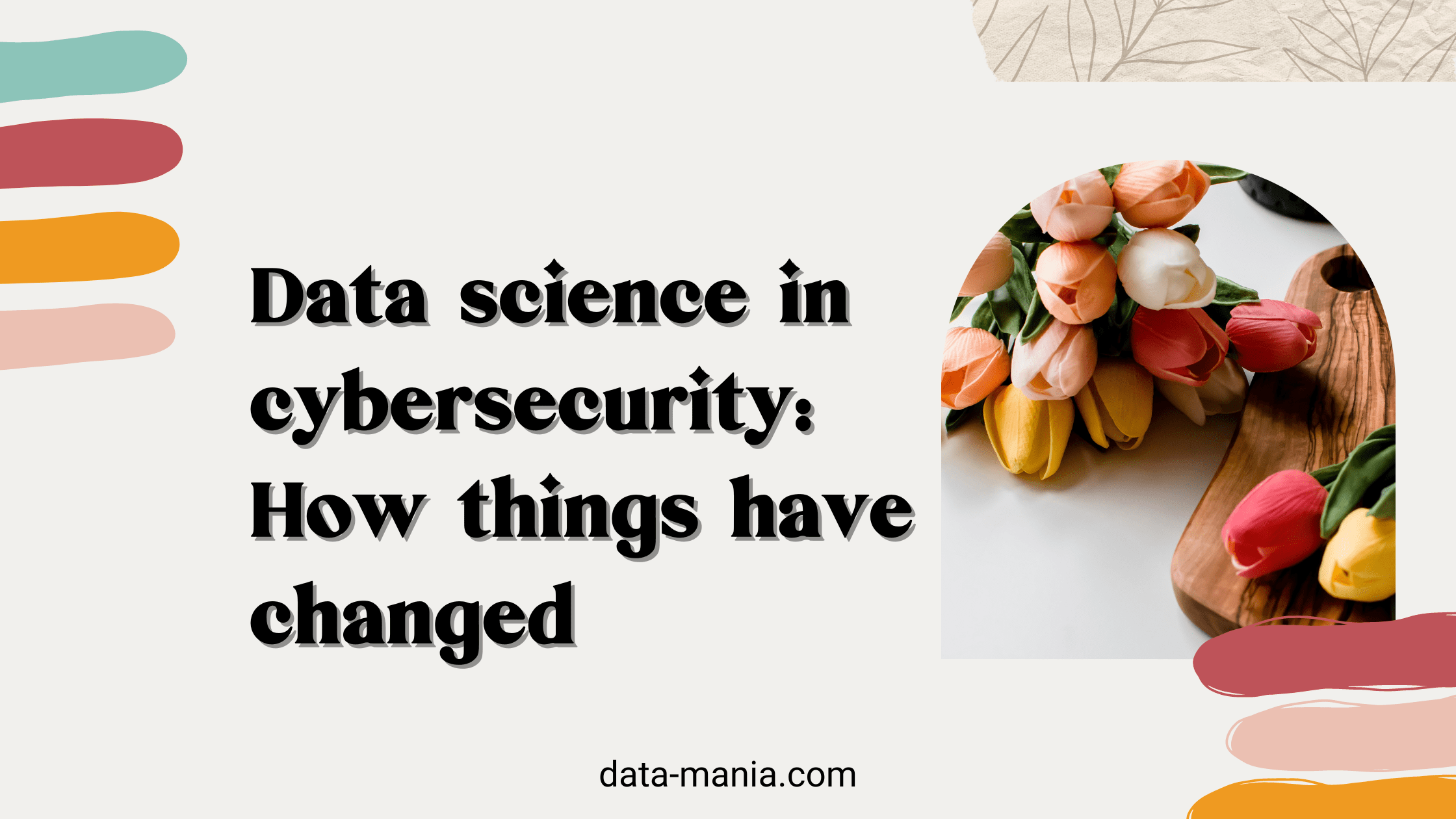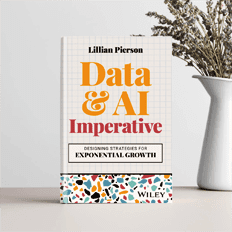Data science brings a logical structure to unstructured data. Data scientists use machine or deep learning algorithms to compare normal and abnormal patterns. In cybersecurity, data science helps security teams distinguish between potentially malicious network traffic and safe traffic.

Applications of data science in cybersecurity are relatively new. Many companies are still using traditional measures like legacy antiviruses and firewalls. This article reviews the relationship between data science and cybersecurity and the most common use cases.
Cybersecurity Before Data Science
Large organizations have a lot of data moving throughout the network. The data can originate from internal computers, IT systems, and security tools. However, these endpoints do not communicate with each other. The security technology responsible for detecting attacks cannot always see the overall picture of threats.
Before the adoption of data science, most large organizations used the Fear, Uncertainty, and Doubt (FUD) approach in cybersecurity. The information security strategy was based on FUD-based assumptions about where and how attackers may attack.
With the help of data science, security teams can translate technical risk into business risk with data-driven tools and methods. Ultimately, data science enabled the cyber-security industry to move from assumption to facts.
The Relationship Between Data Science and Cybersecurity

The goal of cybersecurity is to stop intrusions and attacks, identify threats like malware, and prevent fraud. Data science uses Machine Learning (ML) to identify and prevent these threats. For instance, security teams can analyze data from a wide range of samples to identify security threats. The purpose of this analysis is to reduce false positives while identifying intrusions and attacks.
Security technologies like User and Entity Behavior Analytics (UEBA) use data science to identify anomalies in user behavior that may be caused by an attacker. Usually, there is a correlation between abnormal user behavior and security attacks. Data science can paint a bigger picture of what is going on by connecting the dots between these abnormalities. The security team can then take proper preventative measures to stop the intrusion.
The process is the same for preventing fraud. Security teams detect abnormalities in credit card purchases by using statistical data analysis. The analyzed information is then used to identify and prevent fraudulent activity.
Data Science Challenges
Data science improves cybersecurity, but that comes with a set of challenges. Here are some challenges:
- Not enough data—there are a lot of nuances involved in identifying behavioral abnormalities. Machine learning algorithms need to assess all possible data to distinguish between normal and abnormal behavior. The more data, the better. Unfortunately, data scientists don’t always have access to enough data.
- Lab-based data—data scientists often use synthetic data that was created in a lab environment. The problem is that hackers hardly play by the rules. You should assess real user data when identifying abnormal behavior threats.
- False positives—not all unusual behavior is a cybersecurity event. For example, people that log into their devices from another country while traveling are not a security threat. The challenge here is in understanding the context of the event and assessing the bigger picture.
How Data Science Has Changed Cybersecurity
Data science had a profound effect on cybersecurity. This section aims to explain key impacts of data science in the field of cybersecurity.
Intrusion Detection and Endpoint Protection
Security professionals and hackers always played a game of cat-and-mouse. Attackers used to constantly improve their intrusion methods and tools. Whereas security teams improved detection systems based on known attacks. Attackers always had the upper hand in this situation.
Data science techniques use both historical and current information to predict future attacks. In addition, machine learning algorithms can improve an organization’s security strategy by spotting vulnerabilities in the information security environment. For example, modern endpoint protection technologies can leverage AI/ML algorithms to detect suspicious behavior that might indicate an unknown attack.
Establishing DevSecOps Cycles
DevOps pipelines ensure a constant feedback loop by maintaining a culture of collaboration. DevSecOps adds a security element to DevOps teams. A DevSecOps professional will first identify the most critical security challenge and then establish a workflow based on that.
Data scientists are already familiar with DevOps practices because they use automation in their workflows. As a result, DevSecOps can easily be applied to data science in a process called DataSecOps. This type of agile methodology enables data scientists to promote security and privacy continuously.
Automating Digital Forensics
In the past, investigating security incidents was an arduous manual process. Security analysts had to access multiple tools, export data files and correlate them using various analysis techniques.
Modern security technology rely on machine learning to enable automated digital forensics. Digital forensics and incident response (DFIR) solutions merge digital forensics with incident response, making it possible to automatically identify and respond to attacks based on advanced data analysis.
Behavioral Analytics
Traditional antiviruses and firewalls match signatures from previous attacks to detect intrusions. Attackers can easily evade legacy technologies by using new types of attacks.
Behavior analytics tools like User and Entity Behavior Analytics (UEBA) use machine learning to detect anomalies and potential cyberattacks. If, for example, a hacker stole your password and username, they may be able to log into your system. However, it would be much harder to mimic your behavior.
Data protection with Associate Rule Learning
Associate Rule Learning (ARL) is a machine learning method for discovering relations between items in large databases. The most typical example is market-based analysis. ARL shows relations between items that people buy most frequently. For example, a combination of onions and meat may relate to a burger.
ARL techniques may also recommend data protection measures. The ARL studies the characteristics of existing data and alerts automatically when it detects unusual characteristics. The system constantly updates itself to detect even the slightest deviations in the data.
Backup and data recovery
New backup technologies are leveraging machine learning to automate repetitive backup and recovery tasks. Machine learning algorithms are trained to follow the priorities and requirements of security plans.
Backup and recovery systems based on ML can help incident response teams organize workspaces and resources. For example, ML tools can access and recommend the necessary equipment and locations for a particular business recovery plan based on the company’s needs.
Conclusion
Cyber attacks are always evolving, and no one knows what form they will take in the future. Data science enables companies to predict possible future threats based on historical data with technologies like UEBA. Intrusion Detection Systems (IDS) use regression models to predict potential malicious attacks. Data science can leverage the power of data to create stronger protection against cyber attacks, and data losses.
Hey! If you liked this post, I’d really appreciate it if you’d share the love by clicking one of the share buttons below!
A Guest Post By…
 This blog post was generously contributed to Data-Mania by Gilad David Maayan. Gilad David Maayan is a technology writer who has worked with over 150 technology companies including SAP, Samsung NEXT, NetApp and Imperva, producing technical and thought leadership content that elucidates technical solutions for developers and IT leadership.
This blog post was generously contributed to Data-Mania by Gilad David Maayan. Gilad David Maayan is a technology writer who has worked with over 150 technology companies including SAP, Samsung NEXT, NetApp and Imperva, producing technical and thought leadership content that elucidates technical solutions for developers and IT leadership.
You can follow Gilad on LinkedIn.
If you’d like to contribute to the Data-Mania blog community yourself, please drop us a line at communication@data-mania.com.








